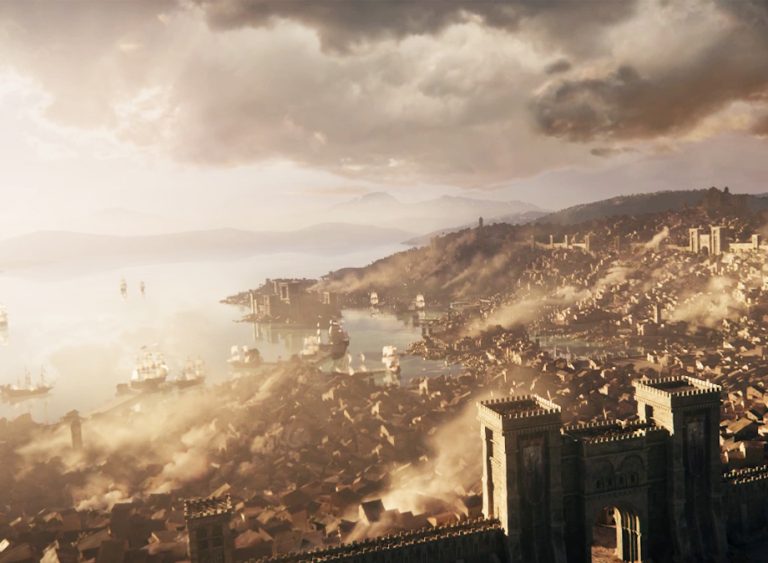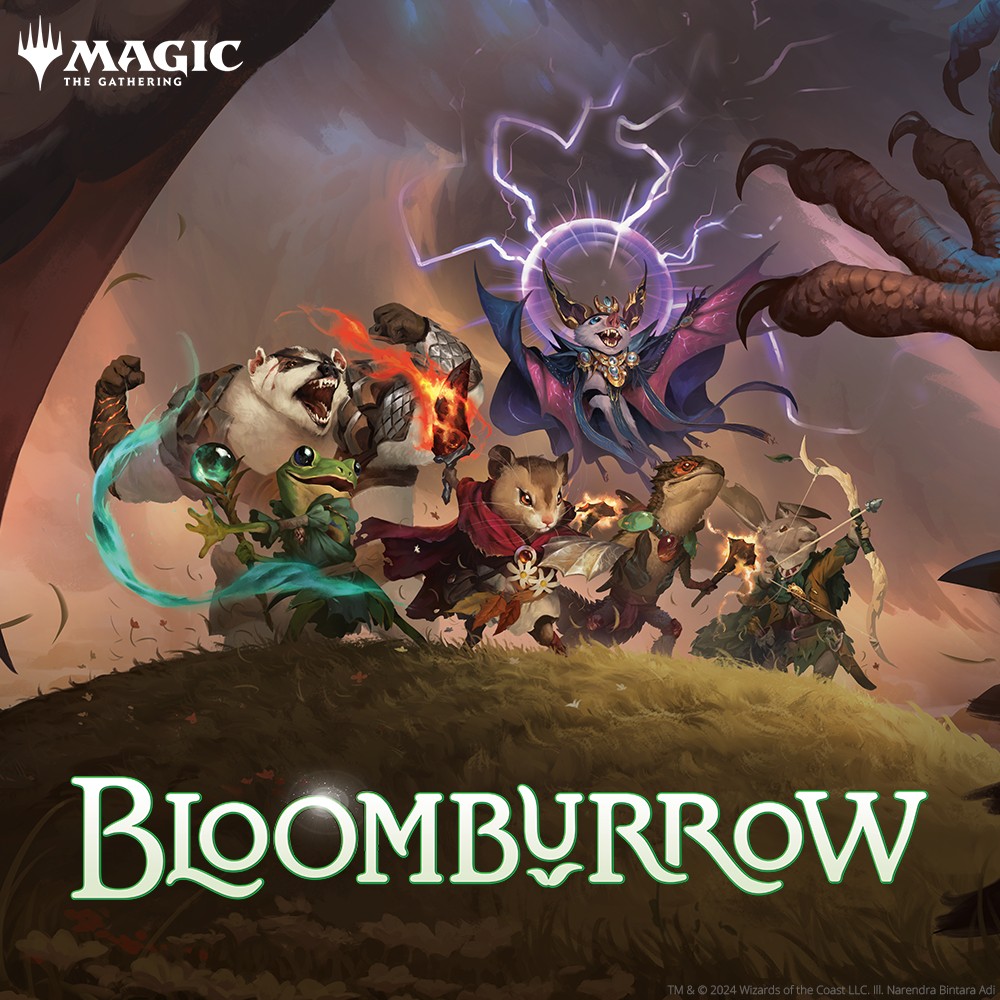You know, it occurred to me that Bhaal is so woven into the history of Baldur’s Gate that we can probably call it the murder capital of the Sword Coast. Hahaha… ah… I’ll see myself out.
Hello there, and welcome back to Lore-Win, the D&D lore deep dive article series! As always, I am your humble Loremaster, Sokar.
And with that out of the way, let’s get back into the tale of Baldur’s Gate.
A Quick Recap
Last article, I went into the founding of Baldur’s Gate. How it started off as a pirate haven known as Gray Harbor. Then a local adventurer named Balduran returned from an expedition with a boatload of money and transformed it into a pirate haven that had a wall around it.
Balduran headed off on another expedition and went missing. The local farmers took control over the wall’s construction and built it to defend their homes. More people moved in around the walled community and it grew. Then the rich folks in the walls taxed trade to the rest and they rebelled. Pirate captains became the rulers, called themselves dukes, and reinstated the taxes.
Baldur’s Gate got rich thanks to trade. They fought some orcs, their general betrayed them, so they killed her. Then a child of the god of murder, Bhaal, tried to start a war with their southern neighbours, the nation of Amn. His name was Sarevok. He got killed.
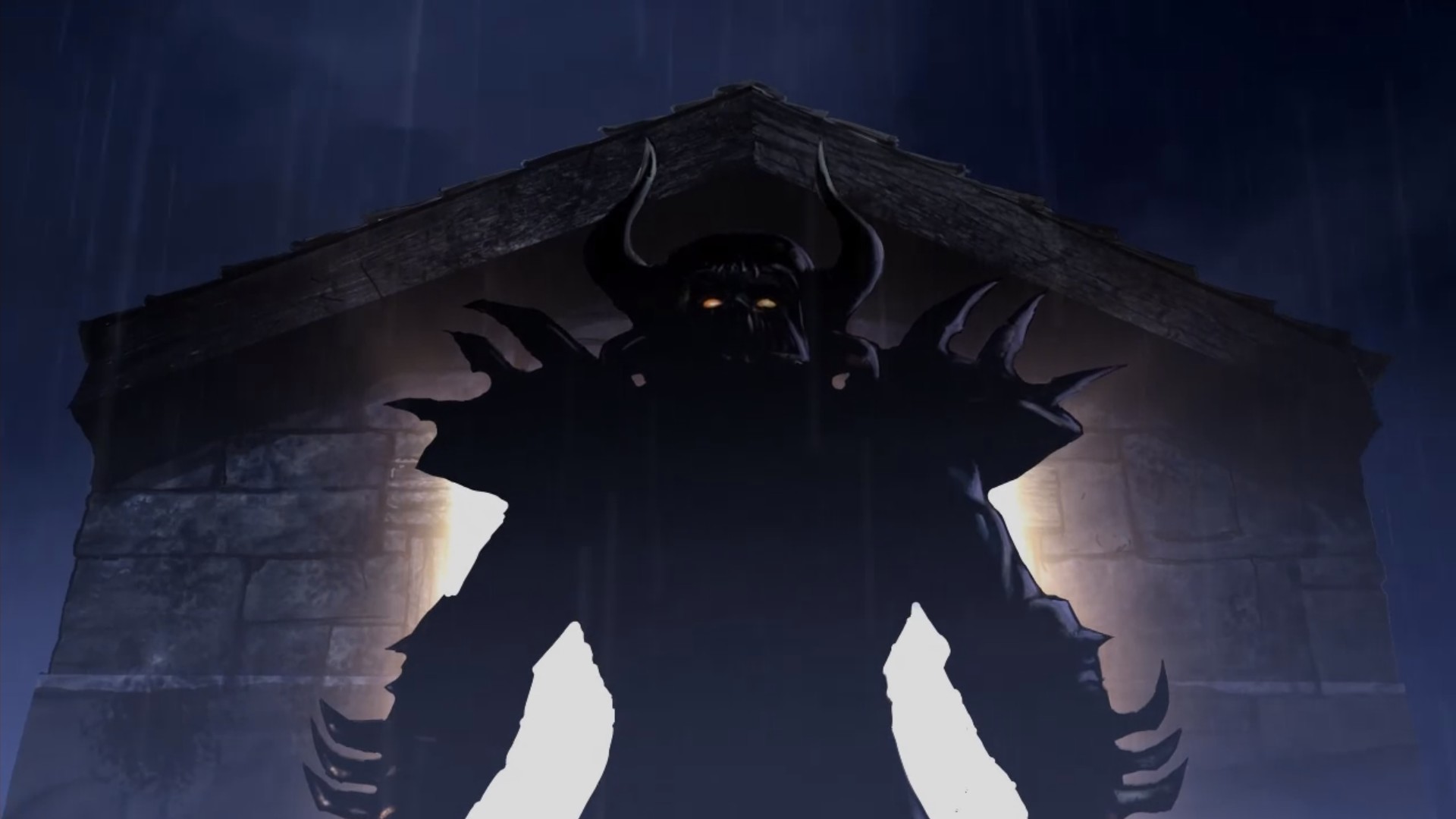
A man who died the way he lived: evil.
Source: Baldur's Gate
Which leaves us with a shiny, new threat looming over the city.
The Shining Crusade
Within a year of Sarevok’s fall, a new crisis presented itself. Baldur’s Gate found itself almost overwhelmed by a surge of refugees displaced by conflict. This conflict was caused by a group known as The Shining Crusade and their leader, the Aasimar paladin, Caelar Argent.
Caelar Argent had recruited an army with the intent of sending a crusade through to the hells of Avernus. But in order to do this, she and her forces needed to seize Dragonspear Castle, which was known to have a gateway to the hells within. In fact, there had already been two wars over Dragonspear, and many of her soldiers had been veterans of them.
Of course, this was a foolish, foolish idea.

Gaze upon the face of foolishness! Gaze upon it!
Source: Baldur's Gate: Siege of Dragonspear
Content creator Noah Caldwell Gervais put it well when he said, “...there have been many crusades on hell, and all of them were doomed.“
Many wars have been launched on the hells, and none have been successful. Whether it be devils or celestials, the best any of them have managed was a draw in the form of the unending blood wars. For an army of mortals to believe that they had a chance…
Well, it doesn’t speak well to their intelligence, I’m afraid.
Look, speaking as a tiefling, I get it. Even I don’t like demons. They’re evil. They’re chaotic. They just kind of suck overall. But at least I have the common sense to not try and go to their home turf and throw down.
Bloody high-strung Aasimar…
*ahem*
The problem was that Caelar Argent didn’t just stop there. The Shining Crusade expanded their reach, seizing territory around Castle Dragonspear, disrupting trade routes, and displacing people. The crisis grew large enough that the Lords’ Alliance, led by Waterdeep and Baldur’s Gate, raised a coalition army to fight against the Shining Crusade.
And when dealing with a partially divine foe, why not recruit your own partially divine warrior?
The Bhaalspawn was pulled into the conflict and faced down against Caelar and her incredibly foolish forces. The Bhaalspawn was sent in after key targets beneath the Crusade’s stronghold by the commanders of the coalition army. They were also tasked with sapping the castle’s defenses and poisoning their supplies, in preparation for a direct attack.
For a brief period, it seemed like hostilities may have ended through negotiations, with Caelar Argent offering to turn her army over to the coalition in exchange for the Bhaalspawn themselves, but these negotiations broke down and hostilities continued.
Over the course of the war, Baldurian forces faced off against the Shining Crusade in two major battles, once where they fended off an attack on the main coalition war camp, and once at the siege of Dragonspear Castle itself. The Bhaalspawn played an important role in both battles, rallying soldiers behind them to fend off the attacking forces.
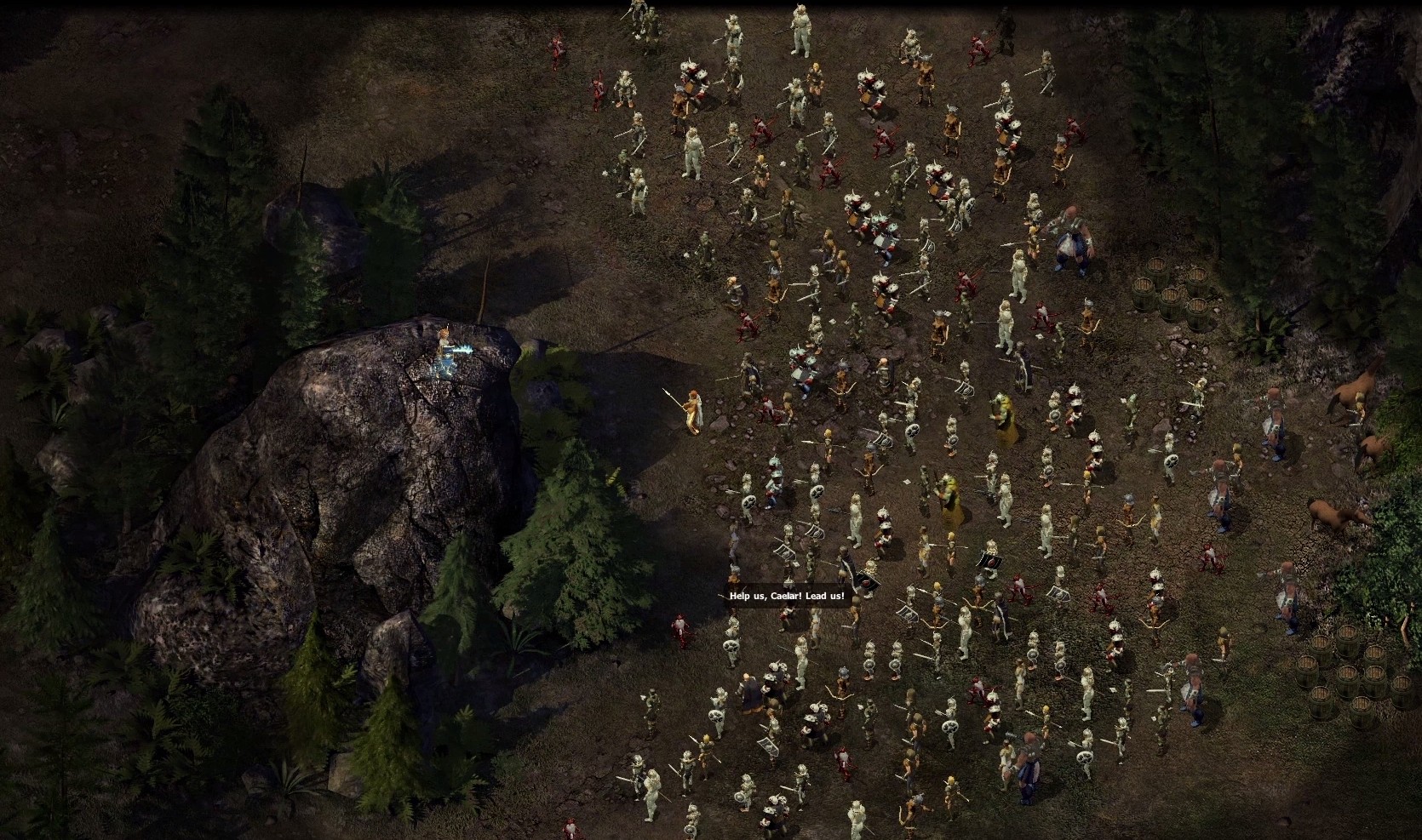
Which is good, because Caelar had a lot of crusaders. Keyword being had.
Source: Baldur's Gate: Siege on Dragonspear
During the siege of Dragonspear Castle, the sabotage that the Bhaalspawn had earlier committed came in handy, allowing the assembled armies of Waterdeep, Daggerford, and Baldur’s Gate to breach the fortress and strike inside. As the Bhaalspawn and a contingent of Flaming Fist mercenaries cornered the last of the crusaders, one of Caelar’s trusted aides betrayed her.
The priest Hephernaan revealed himself as a follower of the devil Belhifet and drew the blood of the Bhaalspawn to open a portal to hell - that’s a hell counter of two, for anyone keeping track.
Caelar and the crusaders charged in and were pursued by the Bhaalspawn and their companions. The Bhaalspawn’s party are the only ones known to have returned from this portal, leaving the Shining Crusade to crumble and the war ending in a coalition victory.
Despite the victory, a loss rocked the upper city. Among the forces dispatched against the Shining Crusade had been Skie Silvershield, daughter of Grand Duke Entar Silvershield.
In the dead of night, Skie found herself alone with the Bhaalspawn and the elven wizard Jon Irenicus. Irenicus transformed her into a terrible beast and forced the Bhaalspawn to murder her before fleeing, framing the Bhaalspawn for her death.
To both avoid tainting the name of Baldur’s Gate with imprisoning their hero and to repay the Bhaalspawn for their service, the Council of Four opted not to arrest them. However, the Bhaalspawn was exiled from the city and would head South towards Amn with their fellow adventurers in the night. Though… they would not reach it so easily.
And in the meantime, Baldur’s Gate knew a semblance of peace.
Eldrith’s Return
Peace, however, is a foreign concept to the city of Baldur’s Gate and so was only fleeting in its presence.
As blackguards are wont to do, Eldirth returned, seeking vengeance against the city that she believed had wronged her. Operating from an onyx tower, Eldrith the Betrayer built up a force to strike back against Baldur’s Gate. She rallied thieves, lizardfolk, drow, and monstrous creatures behind her banner, as well as a growing number of undead that she controlled beneath the city itself with an artifact called the Orb of the Undead.
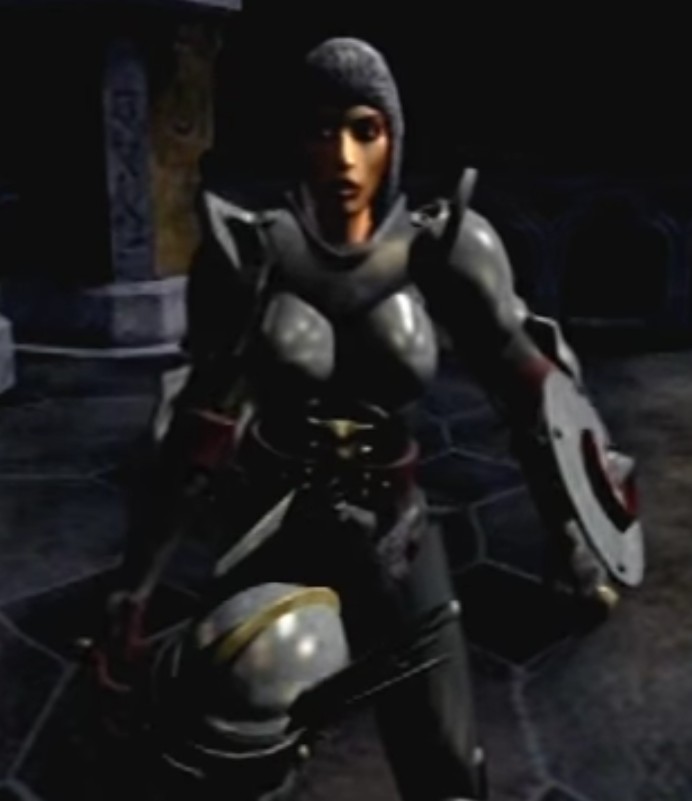
Still the shiniest armour I've seen on a Blackguard.
Source: Baldur's Gate Dark Alliance
This, she named the “Dark Alliance”. Which, incidentally, is the name of the game they appear in. Baldur’s Gate: Dark Alliance.
But her plans for revenge would inadvertently draw in the very individuals that would stop those plans dead in their tracks.
The thieves Eldrith had organized with were a part of the Xantam’s Thieves Guild - not to be mistaken for Xanathar’s Guild, despite also being led by a beholder- and they would start the downfall of the alliance in 1374 DR. Of their members, an officer and Zhentharim agent named Karne had attacked three adventurers and robbed them of their gold and equipment.
Of course, Karne could not have anticipated exactly how much trouble these adventurers would cause for him.
The three were soon drawn in by the secretive Harpers and set about systematically destroying the work of Eldrith and the Xantam guild. They first destroyed the Orb of the Undead, cutting off the Dark Alliances supply of undead, then they tracked Karne to the Xantam guild headquarters.
Karne, having realized the trouble he’d created, proceeded to fake his own death and let his boss die in his place. What a swell guy.
The adventurers then tracked the Dark Alliance back to its leader, Eldrith herself. Assaulting the Onyx Tower, they fought through its defenses and to the Betrayer herself. But even as she laid dying in the aftermath of their battle, feeling remorse for her actions, her Dark Alliance still stood.
Two years later, in 1376 DR, a vampire office of Eldrith named Mordoc SeLanmere took control of the Onyx Tower and planned to destroy Baldur’s Gate himself. Mordoc had been the one to construct the Orb of the Undead, and had similar plans for Baldur’s Gate himself.
But Mordoc’s plans were not limited to just bolstering his ranks with the undead and causing chaos. The vampire sought to utterly destroy the city and transform its citizens into his own undead servants.
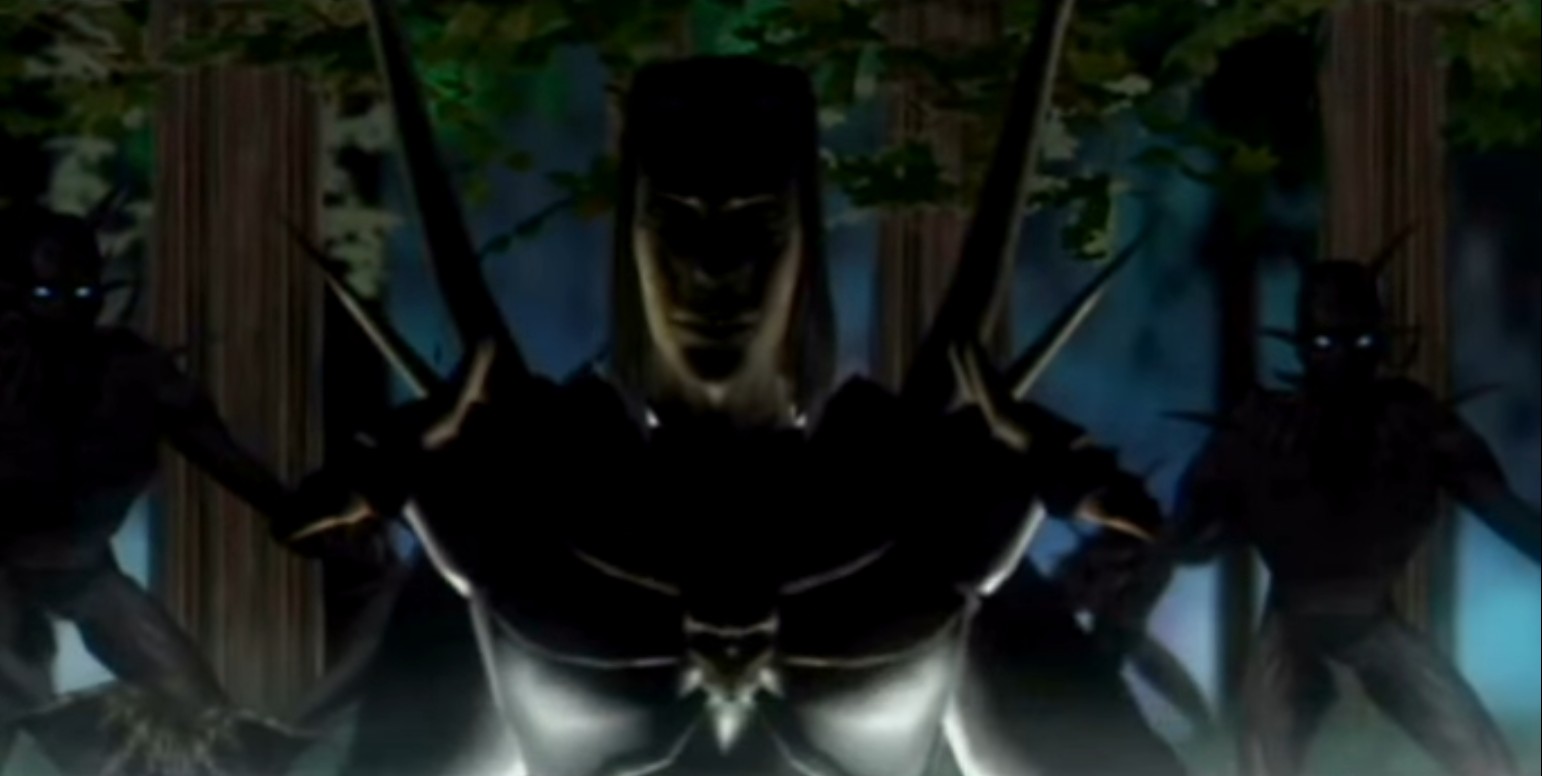
Not that he was short on undead servants.
Source: Baldur's Gate Dark Alliance 2
The destruction of Baldur’s Gate didn’t fit into Karne’s plans, however, and he along with the Harpers and a band of adventurers fought against the vampire. The enemies turned allies fought their way into his sanctum, and forced him to flee.
Mordoc, however, wasn’t done. He moved the Onyx Tower into Baldur’s Gate itself and began his plans to turn its citizens into the undead. Some he transformed into zombies with an artifact called the Onyx Heart. Others he just had his vampiric servants transform.
And in a moment of pure egomania, he tried to rename the city Mordoc’s Gate.
However, his victory was short-lived as the Baldurian forces outside of the city banded together with the adventurers. This force fought through Baldur’s Gate to the Onyx Tower. Inside, the adventurers discovered that Mordoc had traveled to the Plane of Shadow, and was nearing god-like levels of power.
But, what good is an adventure if you don’t kill a god or two?
Mordoc was slain in a frantic battle. As he died, the adventurers too broke the Onyx Heart. With the destruction of the heart, so too was the Onyx Tower destroyed, and with it, Baldur’s Gate returned to its former state.
The Spellplague and beyond
Perhaps in some semblance of karma, or Mordenkainen’s “enforced neutrality”, Baldur’s Gate did well during the Spellplague. Or as you may call it, "the transition between 3.5 and 4th edition". It seems strange to believe, but after so much death and destruction, maybe the city was overdue for a break.
While storms of blue flame devastated other regions, Baldur’s Gate prospered and became a haven for any refugees fleeing the destruction of their homes. In this time the population tripled, but mercifully the prospering city was able to support its growth and expansion.
But as I said, peace is a foreign maiden to Baldur’s Gate, and it only visits briefly.
In the mid-1400s of the DR calendar, troubles came again. Duke Valaken turned on his fellow Dukes and tried to seize control of Baldur’s Gate in a coup. He was backed in this effort by a group of lycanthropes called the Band of the Red Moon.
And here is where our “friend” and resident avatar of vanilla Abdel Adrian returns to the story. As the “canon” Bhaalspawn, Adrian had returned to Baldur’s Gate and enlisted in the Flaming Fists. When Valaken staged his coup, one victim of his machinations was the current Marshal of the Flaming Fists.
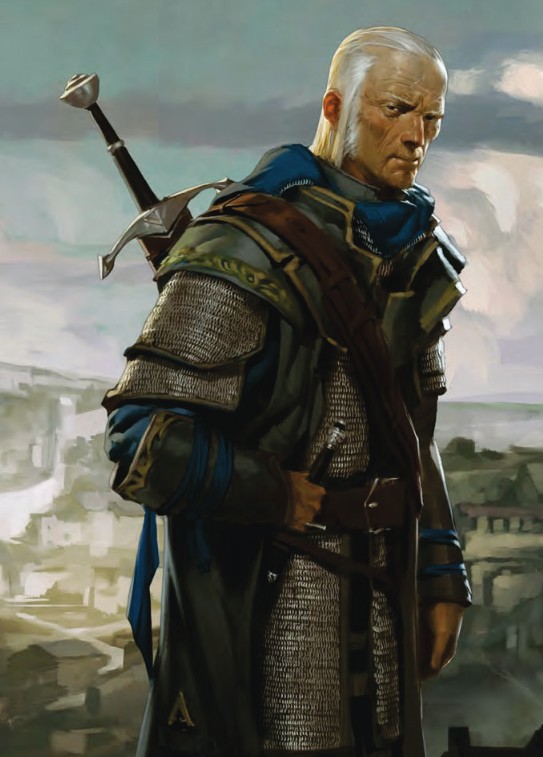
It's not that I hate him. It's just that he's boring.
Source: Murder in Baldur's Gate
Adrian was thrust into command and the Flaming Fists working alongside the Watch managed to stop Valaken and expel him from the city. Once exiled, Adrian was now made a Duke and against his wishes, appointed Grand Duke.
By now Baldur’s Gate had become the most powerful city in Faerun and it no longer feared war with their southern neighbours in Amn. But perhaps they should have feared a war from within.
After all, peace seems always fleeting in Baldur’s Gate…
While giving an address to the people of Baldur’s Gate in 1482 DR, another Bhaalspawn appeared. Viekang, the final Bhaalspawn besides Adrian, attacked his half-sibling. The ensuing battle caused an uproar in the crowd. No one is sure who won, but was happened next was unforgettable.
The victor transformed into a gruesome monstrosity called the Bhaalspawn Slayer and went on a rampage. Eventually, the Flaming Fist and a band of adventurers managed to slay the creature. In recognition of his position, Adrian was given a fitting funeral and laid to rest.
To Hell and Back
Of course, this was not the end of Baldur’s Gate’s troubles. In the wake of their beloved Grand Duke’s death, the Council of Four blamed the event on the Guild. After they enlisted an adventuring band to investigate, a wave of crime struck the city. In response, the Flaming Fist cracked down on the shadier regions of the Lower and Outer city.
The Parliament of Peers, for their part, enacted what I can only describe as the worst laws possible. Like all citizens had to wear attire befitting their station.
This, as you can likely guess, did not work and the chaos continued. Vandals removed the hands of beloved statues, there were kidnappings, and riots, and clashes in the streets. Newly appointed Marshal of the Flaming Fists, Ulder Ravengard, worked to combat the chaos, but to no avail. Then he closed down the local free press and held a series of illegal tribunals.
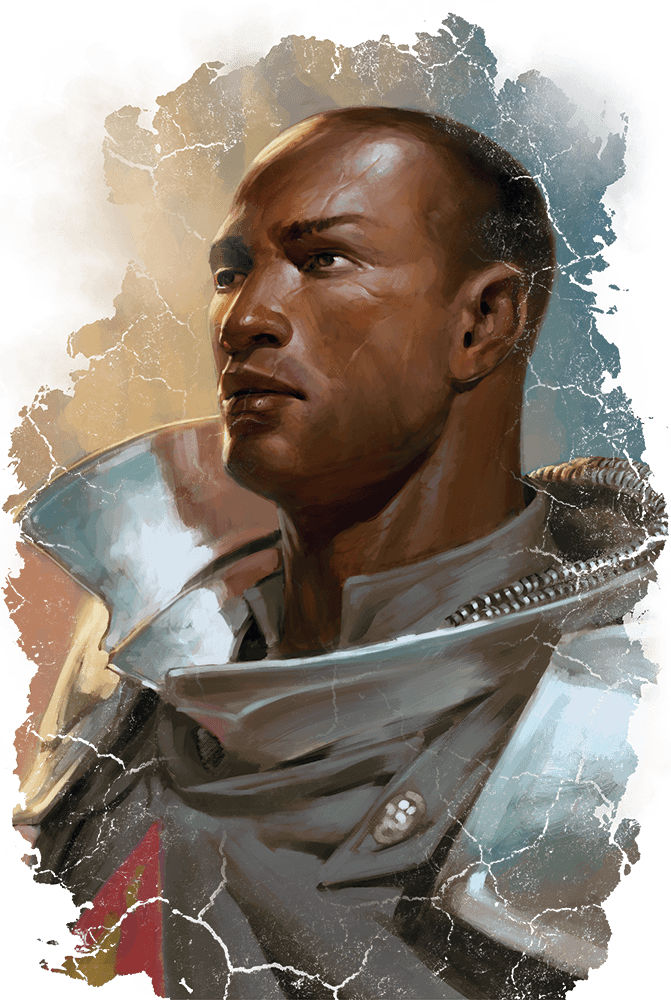
Ulder Ravengard, the most powerful man in Baldur's Gate.
Source: Descent Into Avernus
I can’t imagine this helped the situation any.
All the while, a band of adventurers had been working behind the scenes to investigate the chaos in Baldur’s Gate. They discovered that the chaos was a ploy by Grand Duke Torlin Silvershield to destroy the Parliament of Peers with a stockpile of explosives.
You know, like Guy Fawkes. Don’t really have to try to connect this one to the real world.
Silvershield claimed this was to sever the Guild’s control over the government of Baldur’s Gate. But then again, he also turned out to be a chosen of Bhaal, so take that with a grain of salt. Either way, Silvershield was stopped and taken by the Red Wizards of Thay.
Following this chaos, Marshal Ulcer Ravengard was elected to Grand Duke. A promotion which the Parliament of Peers opposed. And seeing as how Ravengard refused to release command…
Well, I wouldn’t trust him.
However, any nefarious plans he may have had were halted in 1494 DR. Grand Duke Ravengard traveled to Elturel on a diplomatic mission. A diplomatic mission he did not want to embark on. It took months of his fellow Dukes pestering him before he accepted a formal invitation from Elturel’s High Overseer. Duke Thalamra Vanthampur even gathered petitions from nobles and commoners alike.
Of course, shortly after he arrived the city was dragged to the Nine Hells. Like, completely. The whole city was dragged down.
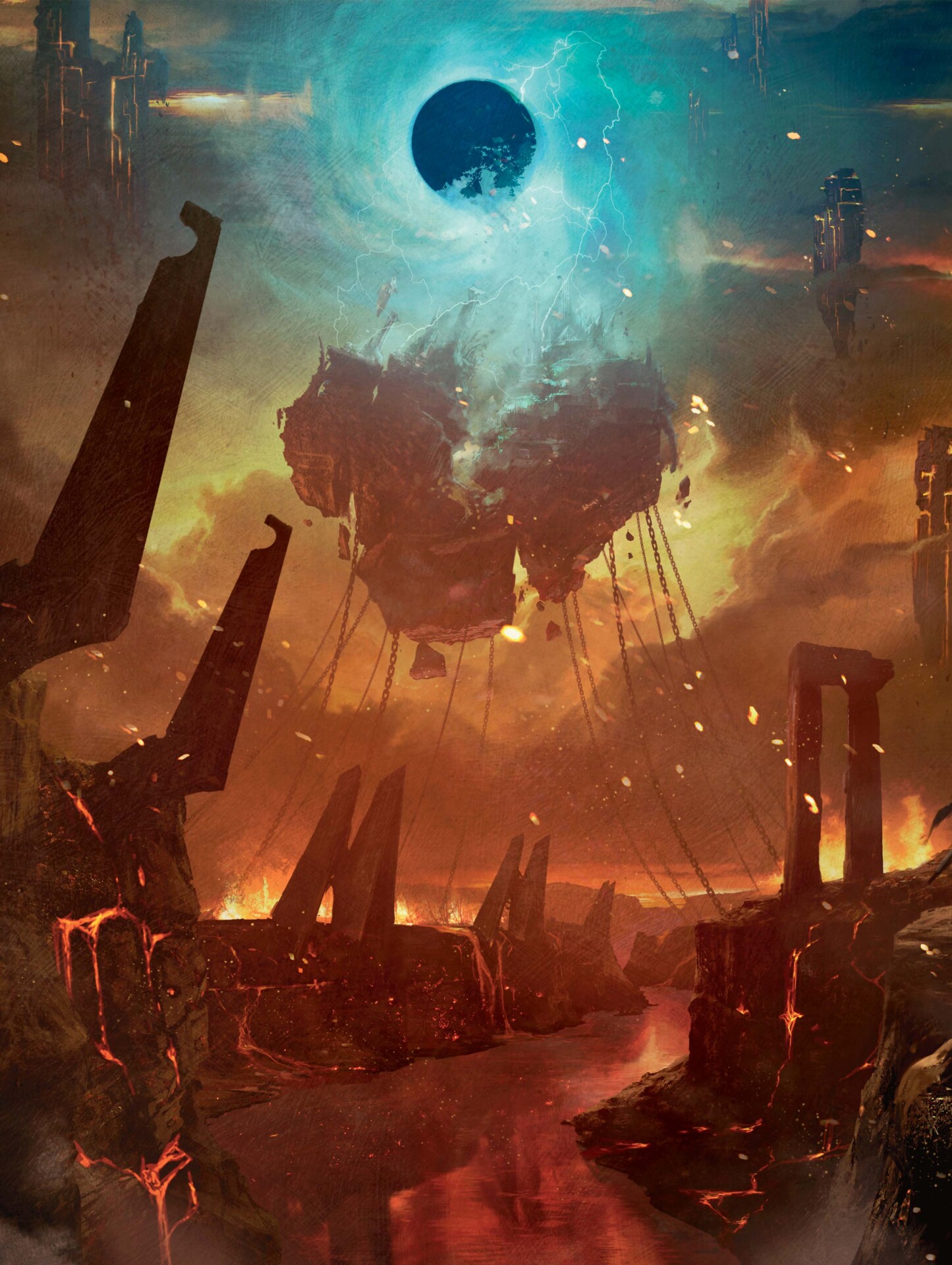
On the bright side, what a view.
Source: Descent Into Avernus
Hell counter now at three.
Word reached Baldur’s Gate around the same time that the refugees did. The Flaming Fist responded like you might expect mercenaries to. They started arresting paladins known as Hellriders from Elturel and shut the gates.
Meanwhile, chaos struck within the city too. Cultists of the Dead Three - or the gods Bane, Bhaal, and Myrkul - began murdering citizens. With the Flaming Fist busy with the refugee “threat”, the citizens are left to fend for themselves.
Meanwhile meanwhile, there are whispers that the same fate may befall Baldur’s Gate as Elturel. Which would bring the hell counter to four.
What is behind this latest chaos within the streets of Baldur’s Gate? Well the answer to that lies within Descent Into Avernus, and to avoid spoiling the mystery for adventurers that is where I will leave the tale.
Baldur’s Gate may be a violent city, but it’s a city many see as worth dying for. More than once, even, if you happen to be named Eldrith. It’s a city with dark corridors and deep history, and plenty of room to adventure within.
I hope some of the tales compiled here have inspired new adventures. And if you want to bring the city to life in your game, you can pick up both the Sword Coast Adventurer’s Guide and Descent Into Avernus at the Wizard’s Tower.
Until next time, remember: Your Bhaalspawn is valid. Ignore Abdel Adrian.
-Loremaster Sokar

